Nestled in the north-eastern region of India lies Meghalaya, a state renowned for its enchanting natural beauty and vibrant cultural heritage. Meghalaya literally means “the abode of clouds”. And we could see how true it is. When we visited Meghalaya in the peak summer season in April, we could see cloud formations in the hilly regions.
There are many places worth visiting in Meghalaya, but let us visit something unique: the living root bridges. These magnificent living structures have captured the imagination of visitors from around the world.
Living root bridges
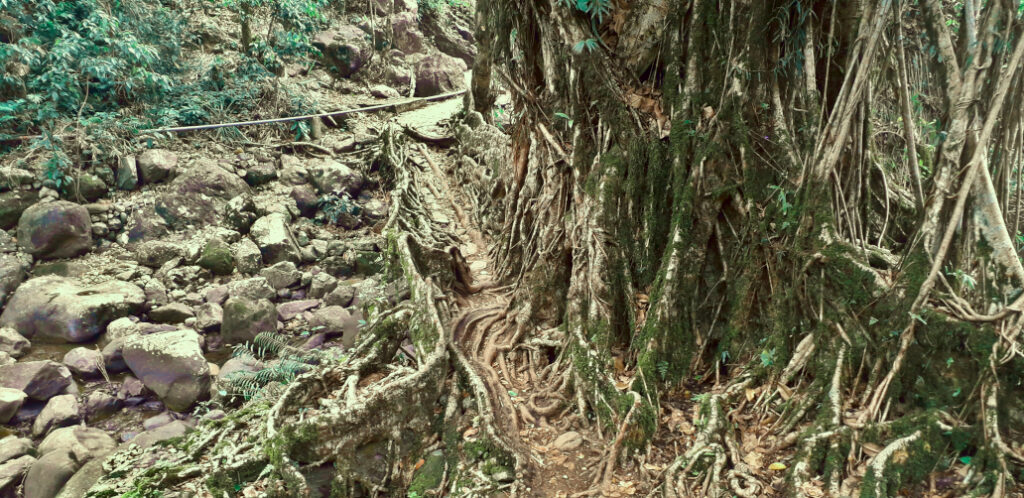
They are suspension bridges made of the intertwining roots of trees across rivers and streams. The Khasi tribes of Meghalaya have been making bridges out of the aerial roots of rubber fig trees for generations. Meghalaya is a state that has dense forests, high hills, and deep valleys. The heavy rainfall in the region creates innumerable streams and rivers. The indigenous Khasi tribes have found a novel solution to the problem of crossing these streams and ravines: root bridges.
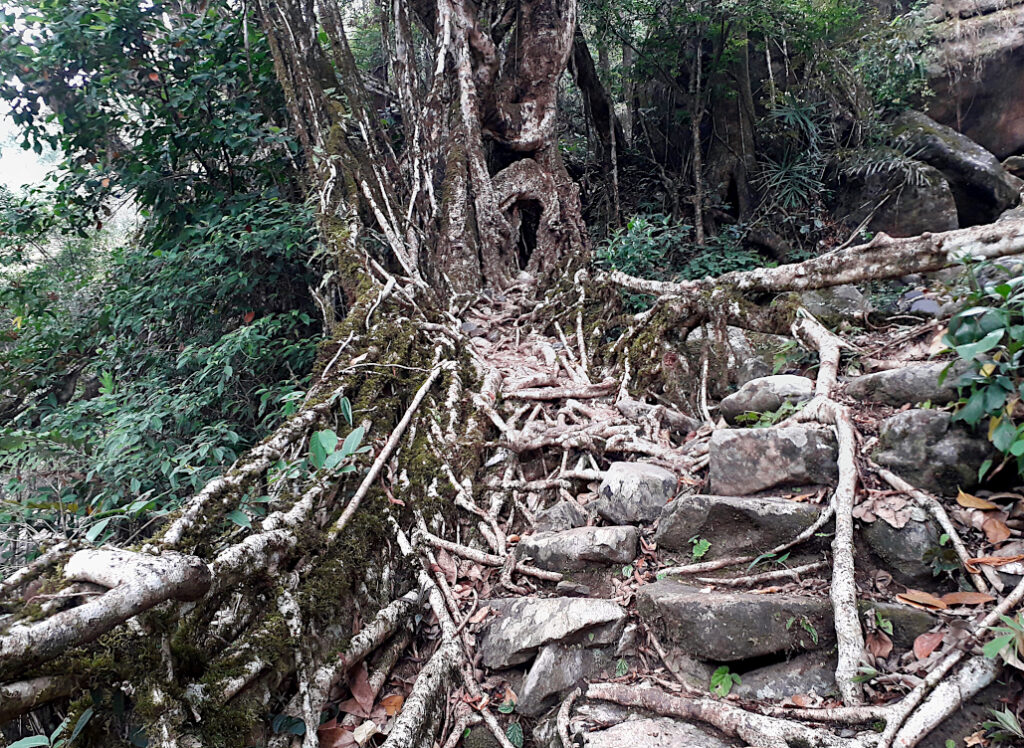
The aerial roots of the rubber fig tree are made to intertwine around bamboo scaffolds or through hollowed areca trunks. The roots grow stronger and, over time, become strong enough to withstand the weight of people.
On our visit to Meghalaya, we saw four root bridges. Most of these bridges are in the southern part of Meghalaya, around Cherrapunji. It is said that there are at least 100 living root bridges in Meghalaya. Locally known as Sohra, Cherrapunji is known as the wettest place on earth, along with Mawsynram, its neighbouring village.
Route to the root bridge
The most famous and visited root bridge is the double root bridge in Nongriat village. We stayed in a resort in Tyrna village, just near the entrance to the trekking point to Nongriat. The double-decker bridge can be reached by a steep descent of about 3500 steps. It takes about 2 to 3 hours to climb down and about 3 to 4 hours to climb up. The steps are in good condition most of the time, but the continuous descent takes one’s breath away. Not to mention the heaving of the heart while climbing back up. There are a couple of villages we see on the way down where we can refresh ourselves by drinking local juice.
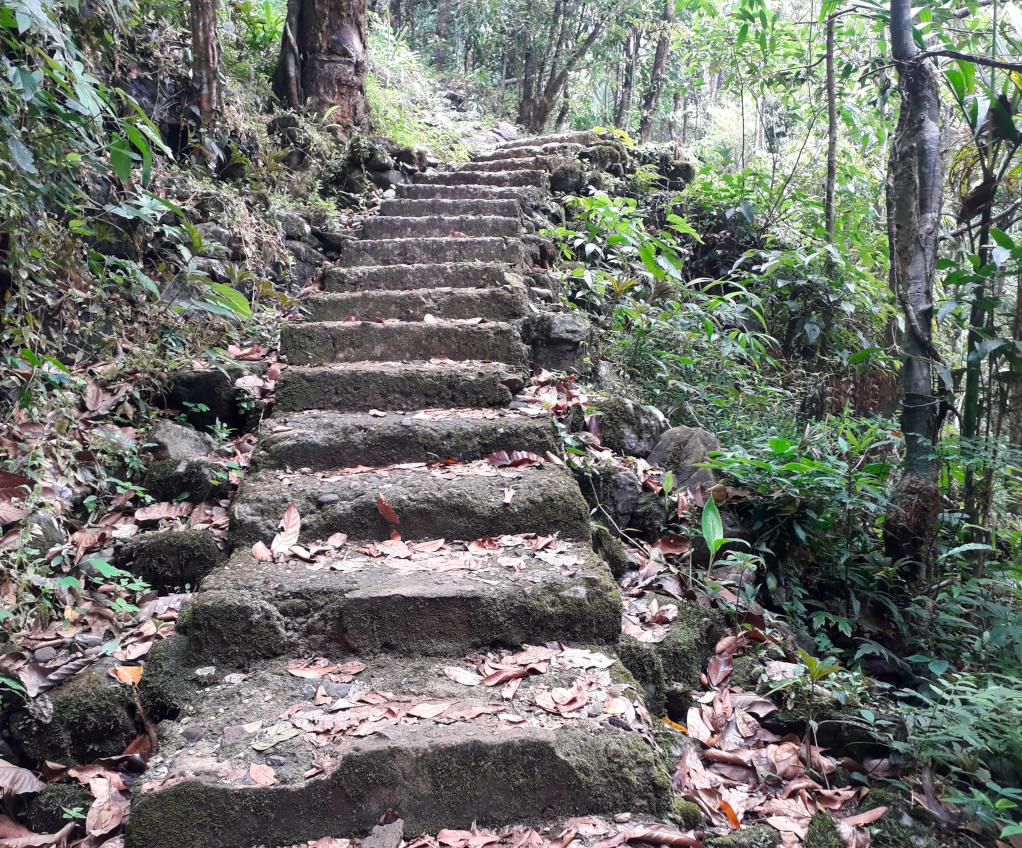
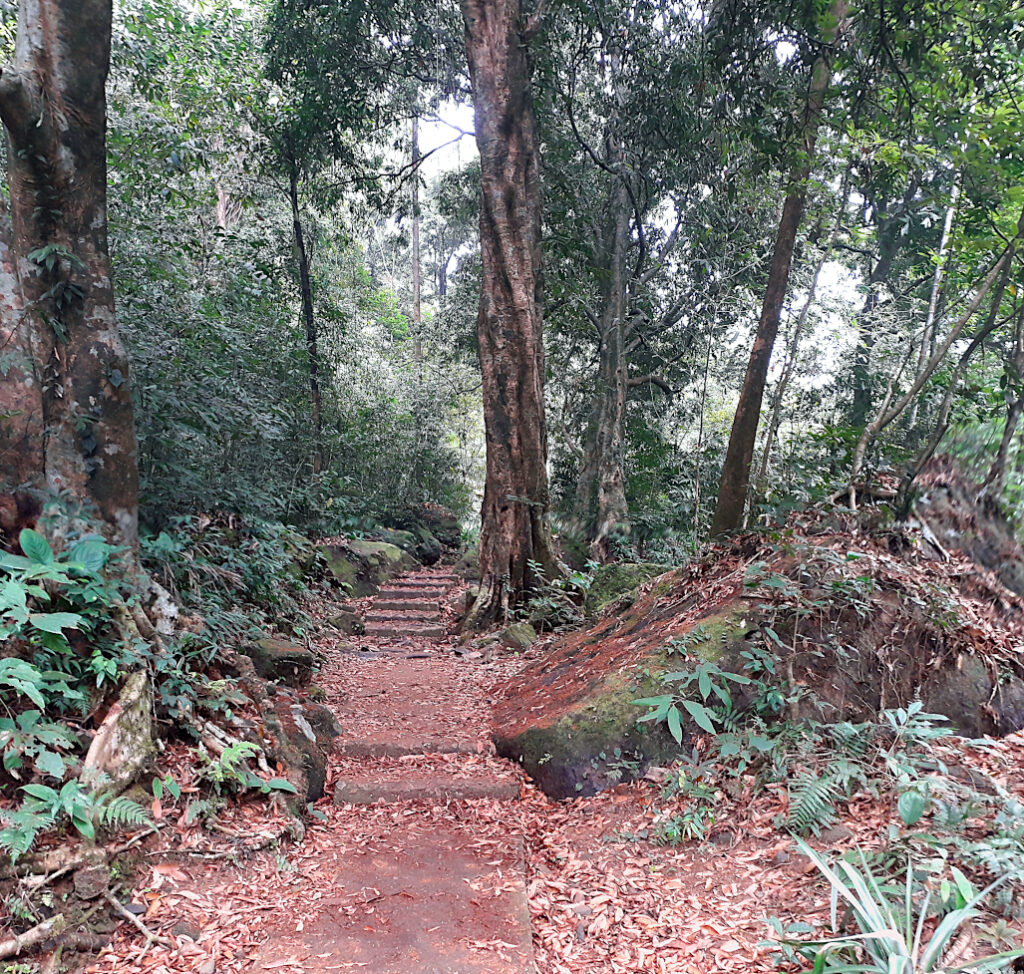
We must cross a few streams on the way by means of suspension bridges. What was striking about all the water bodies in Meghalaya is that they are crystal clear and have a deep blue colour. All streams are so clear that we can see the bottom very clearly.
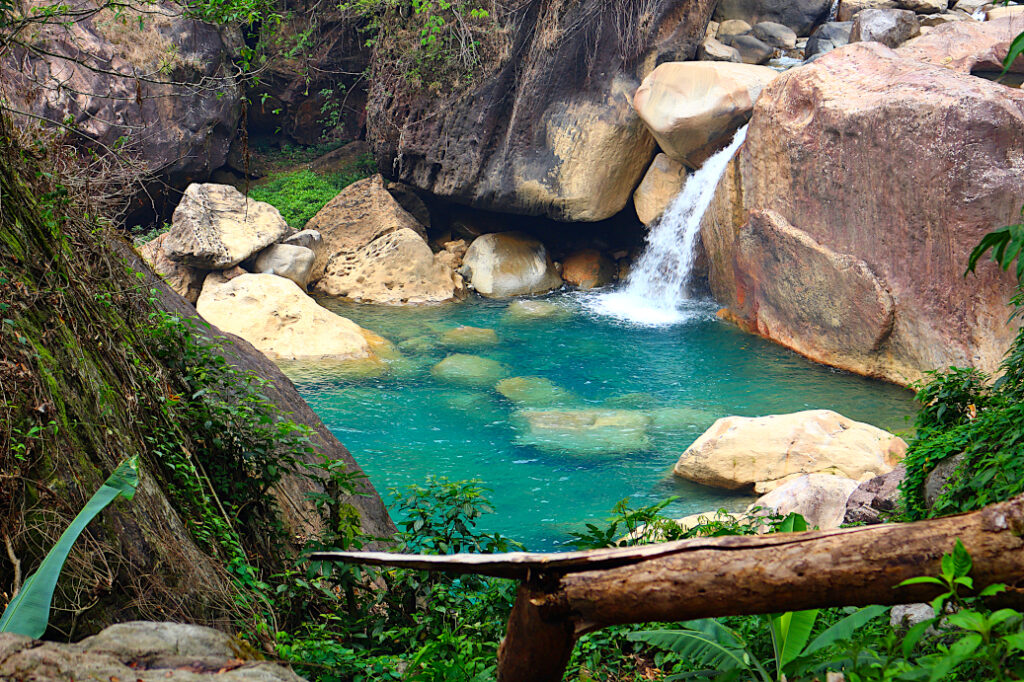
In one of the villages, we came across a board that pointed towards a root bridge that was claimed to be the longest. We skipped it and continued towards the double-decker.
After sweating litres and what seemed to be many hours, we finally reached Nongriat. We have to cross a single root bridge first. There is a ticket counter at the entrance. As the name suggests, there are two suspension bridges, one over the other. They make for a great picture.
The double decker root bridge
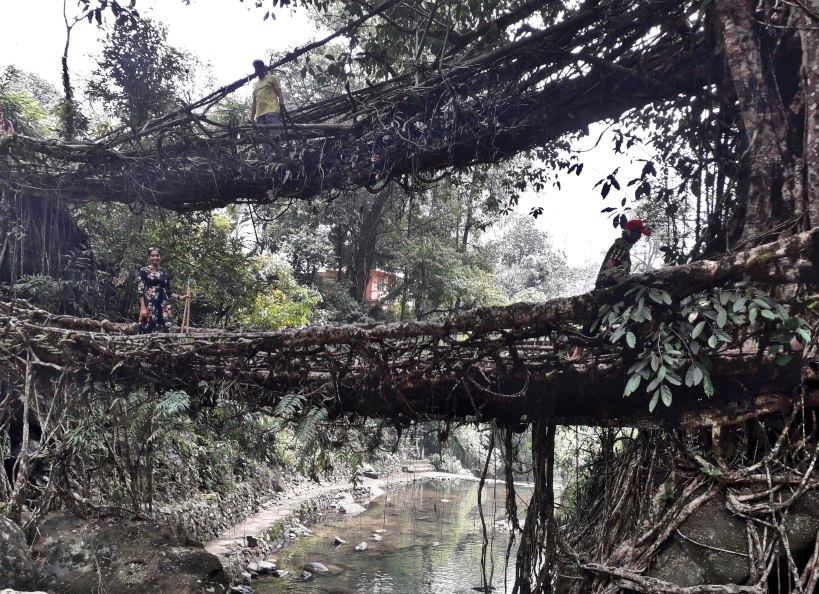
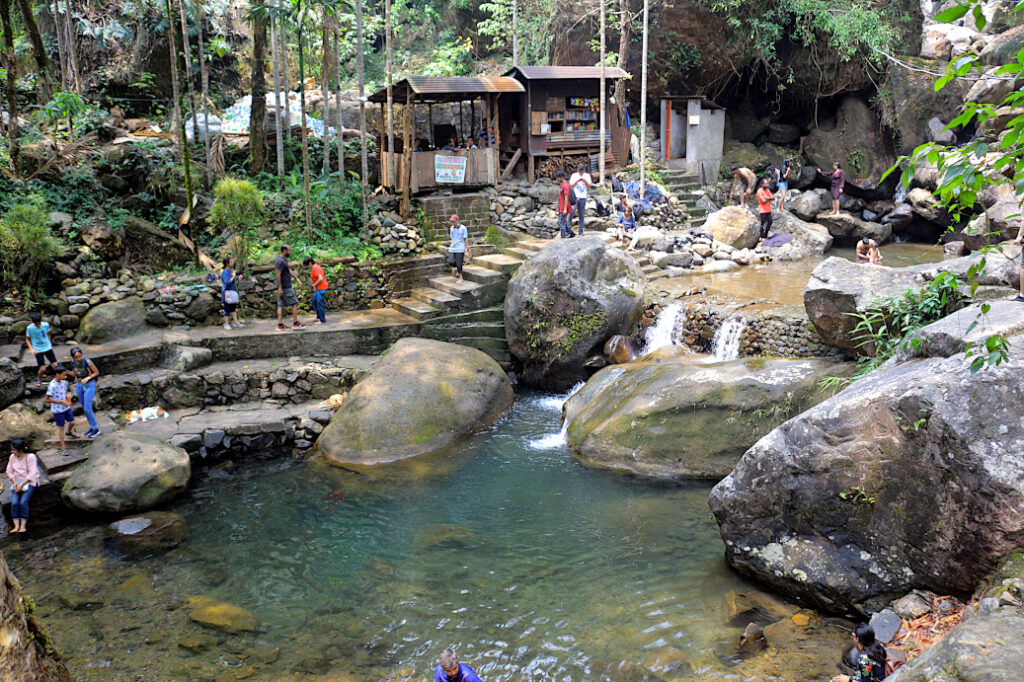
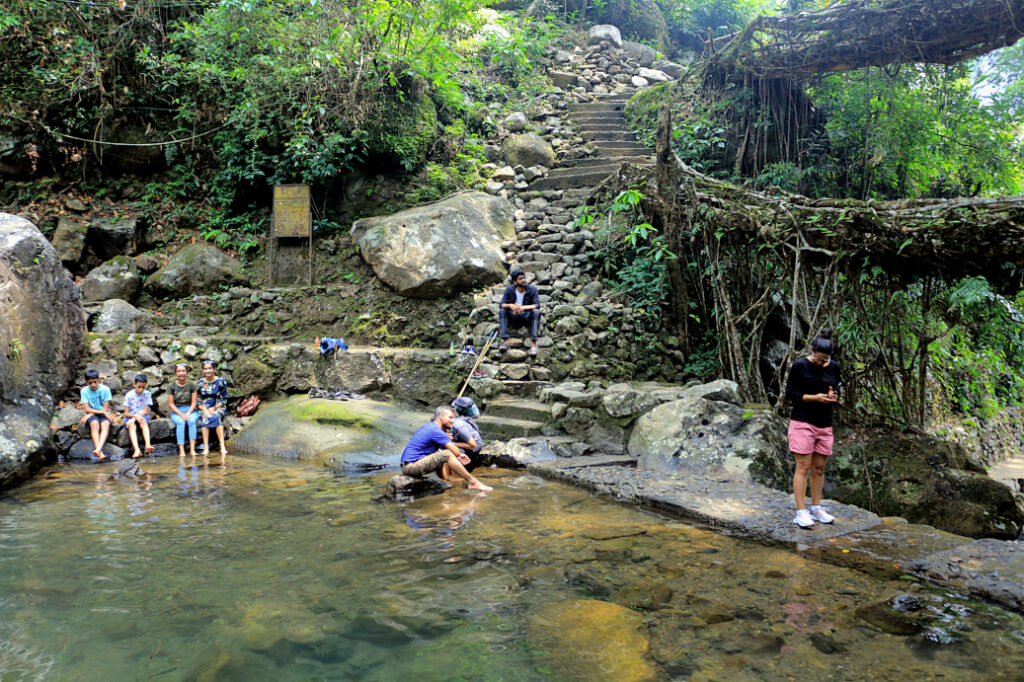
There is a small waterfall and a pool below. A natural, free fish spa is guaranteed when you put your tired feet into the water.
For those who still have stamina left, they can move ahead to Rainbow Falls. Some of us went towards Rainbow Falls; another one-hour trek was needed. On the way, we passed through another root bridge, and a natural swimming pool with a crystal-clear, deep turquoise colour.
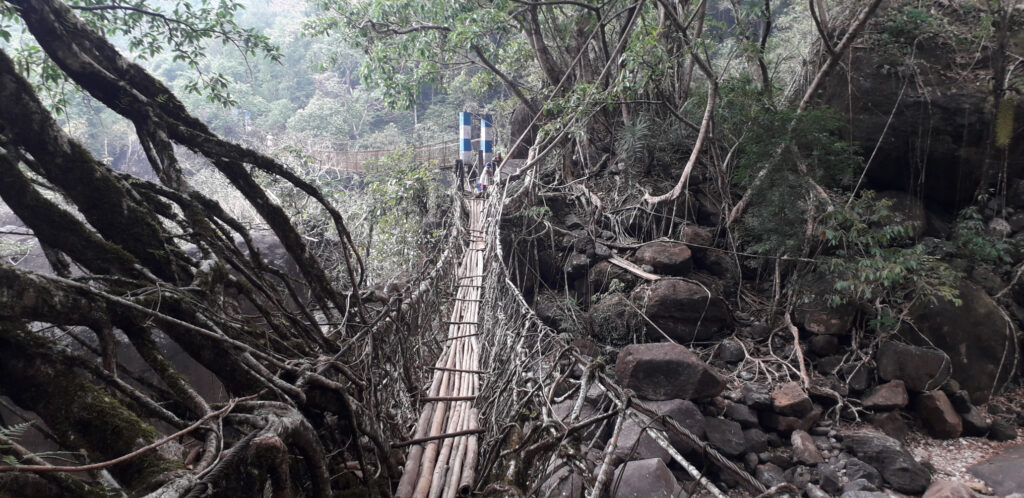
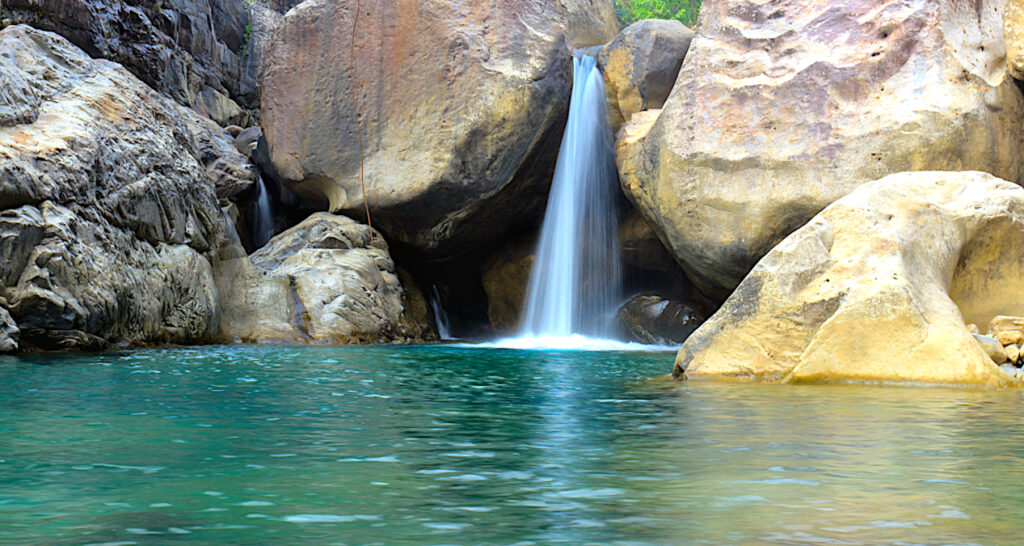
Rainbow Falls is worth the arduous trek. We just cannot miss the intense blue pool.
The gushing water removes all the tiredness and makes us unwilling to leave that place. The journey back takes another hour, or more, if you wish to relax in the natural pool. From the double-decker bridge in Nongriat, it takes about 3 to 4 hours to ascend. All in all, the living root bridge and Rainbow Falls are worth a visit, and they do not disappoint.
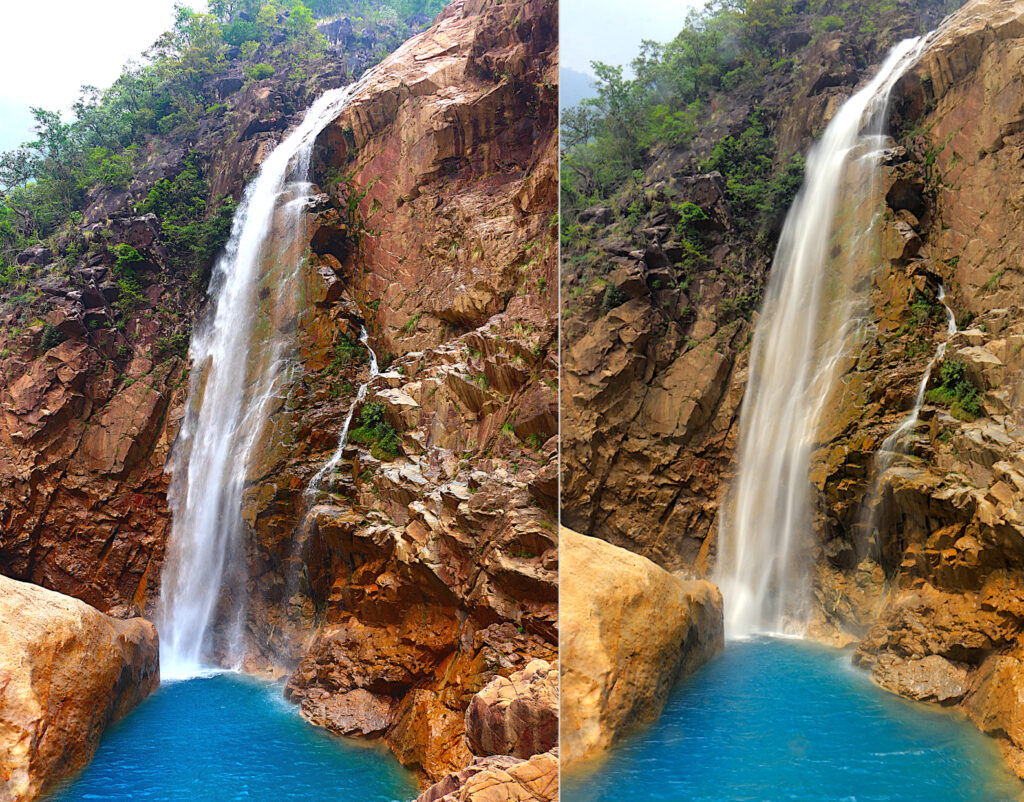
How to reach?
Guwahati is the gateway to the north-east. It is well connected by roads, trains, and flights. There are flights between Bengaluru and Guwahati, whose Lokpriya Gopinath Bordoloi International Airport is located some 20 km from the city. From Guwahati, it is about 100 km, or 2.5 hour journey, to Shillong, the capital of Meghalaya.
Shillong to Cherrapunji (Sohra) takes another 1 hour 45 minutes as it is about 50 km away and the terrain is hilly.
Cherrapunji to Tyrna is about 20 km. Tyrna village is the starting point of the trek to Nongriat. Nongriat is about 3.5 km down.
Best time to visit
November to April is the best time to visit. The monsoon is heavy in the region, so better avoid the rainy season. Just after the monsoon will be ideal, as it will be cool and the hills will be vibrant with green after the rains.
Timings: 5 am to 5 pm
Charges for the double decker bridges
Rs.20 per person
Rs.50 for still camera
Places to stay
Cherrapunji (Sohra) has many homestays, resorts, and hotels. But if you want to avoid travelling to start your trek, there is a resort just near the starting steps. If you feel too exhausted to return, you can also book homestays in Nongriat.

